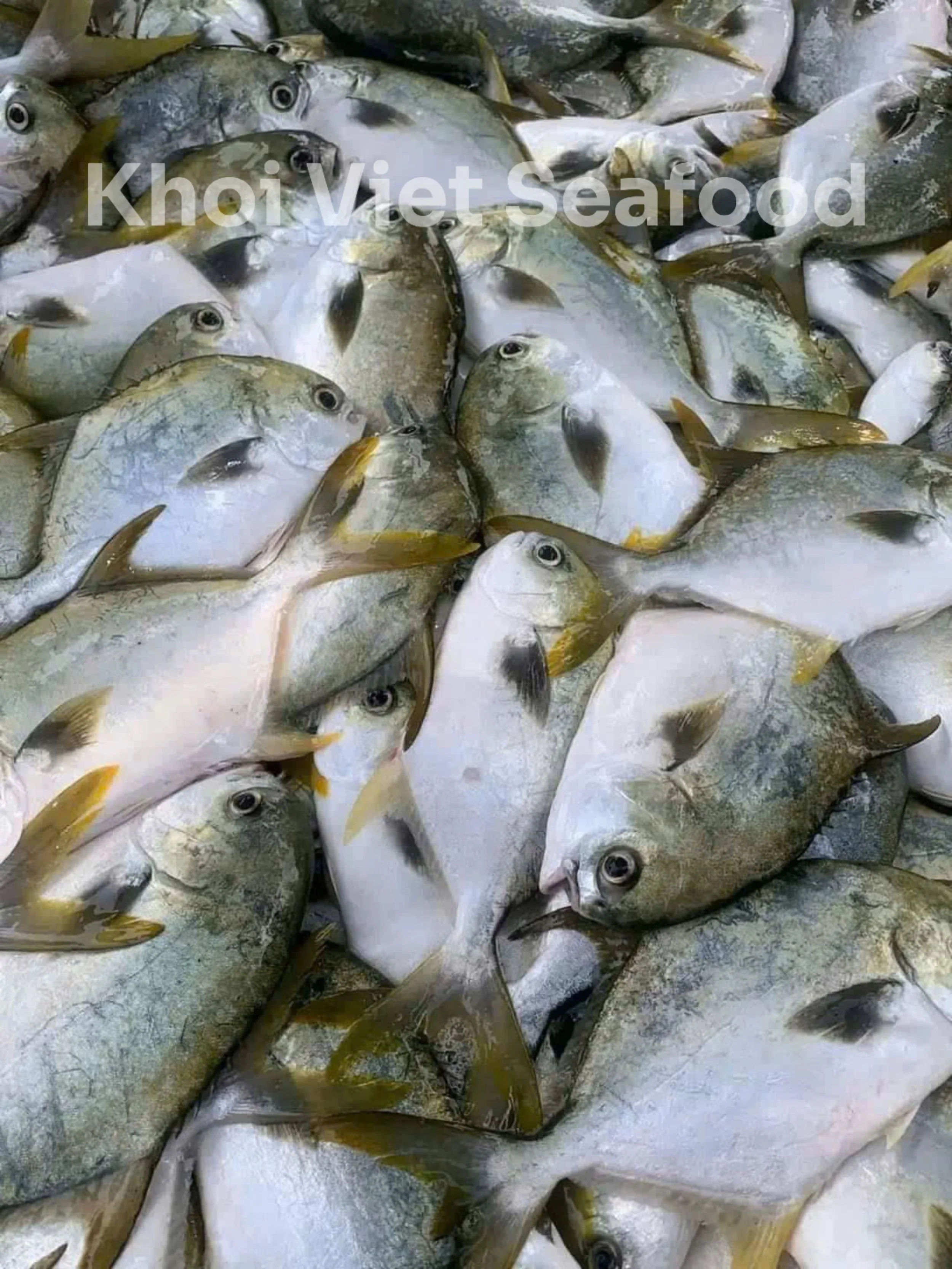Chemical-Free, Premium, and Delicious: The Rise of Farm-Raised Pompano
When it comes to premium seafood, pompano also known as Golden Pomfret is a name that resonates with chefs and seafood lovers worldwide. Known for its exceptional flavor, tender texture, and versatility in the kitchen, pompano is more than just a fish—it’s a culinary experience.
The name "pompano" originates from the Spanish word pámpano, which means "vine tendril" or "a fish with a leaf-like body." This poetic name perfectly describes the fish’s broad, flat, and silvery appearance, which resembles the rounded shape of vine leaves. Its scientific name, Trachinotus blochii, places it in the Carangidae family, alongside other fast-swimming, streamlined fish.
Farm Raised Pompano Vietnam Origin
Our contract farmers adhere to stringent standards to ensure the products are free from harmful chemicals
Farmed in controlled aquaculture environments, free from antibiotics and harmful chemicals. Natural feeding practices and advanced water treatment systems maintain the fish's pristine quality.
Is Pompano Popular?
Absolutely! Pompano enjoys global popularity, especially in high-end restaurants and premium seafood markets. Its mild, buttery flavor and delicate, flaky texture make it a favorite for gourmet dishes.
Mild, clean flavor that appeals to a wide audience.
High adaptability to various cuisines and cooking styles.
Renowned as a “luxury fish” due to its premium quality and high demand.
Pompano’s versatility in the kitchen is a major reason for its popularity.
Some common ways to enjoy this fish such as:
Grilling: Its firm texture and rich flavor shine on a barbecue.
Baking: Often prepared whole with herbs, citrus, and butter.
Steaming: Popular in Asian cuisines to preserve its natural sweetness.
Frying: Crispy pompano is a crowd-pleaser, often served with dipping sauces.
Vietnam is a major hub for farming pompano, particularly the silver pompano (Trachinotus blochii). Farm-raised pompano typically grows to sizes ranging from 500 grams to 800 grams, which are ideal for both domestic consumption and export.
Is it Chemical-Free?
Vietnamese pompano is raised under strict aquaculture standards, ensuring it is free from harmful chemicals and antibiotics.
Natural Feed: Utilizing organic or naturally sourced feed to promote healthy growth without synthetic additives
Eco-Friendly Pond Management: Selecting pond sites carefully and protecting nearby ecosystems, such as mangroves, to maintain environmental balance
Disease Management: Employing preventive measures and maintaining optimal water quality to reduce the need for antibiotics or chemical treatments
At Khoi Viet Seafood, quality assurance begins right from the source
Chemical-free farming and meticulous processing make our Pompano a top choice for health-conscious consumers.
Whole, gutted, and scaled options are available to meet diverse market demands. Vacuum-sealed packaging ensures freshness while preventing contamination
Aquaculture Practices in Vietnam
Offshore Cage Culture: Implementing offshore cage systems to provide a natural habitat for pompano, enhancing fish health and product quality. Reference : U.S. Soybean Export Council
Controlled Environments: Utilizing recirculating aquaculture systems (RAS) to monitor water quality and fish health, minimizing environmental impact.
In the wild, pompano thrives in warm, coastal waters with sandy or muddy seabeds. It is commonly found in tropical and subtropical regions, including the Indo-Pacific and Atlantic Oceans. Its natural diet includes small fish, crustaceans, and plankton, which contribute to its rich flavor and nutritional profile.
What is Pompano’s Nutritional Value?
Pompano is celebrated as a premium seafood delicacy, highly sought after by gourmet dining establishments and international markets. Its exceptional taste, tender texture, and impressive nutritional profile firmly establish its status as a high-value product.
By adopting chemical-free farming practices, we not only meet the needs of health-conscious consumers but also actively support environmental sustainability, ensuring a responsible and eco-friendly approach to aquaculture.



